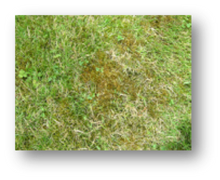*Average lawn size in St. John's & surrounding Areas is 2,000-3,000 SQFT.
1 APPLICATION
Like most weeds, moss is an opportunistic weed that takes advantage and persists in thin, weak and bare areas of your lawn.
Moss infestations are the result of unfavourable growing conditions that favour the growth and development of moss, not the grass.
These unfavourable conditions include:
- Poor soil drainage
- Excessive shade
- Compacted soil
- Acidic soil pH conditions
- Inadequate fertility
- Thatch accumulation
- Drought
- Turfgrass diseases
- Unsustainable turfgrass species
- Improper mowing or irrigation practices
Improving these conditions will encourage healthier turfgrass growth, making it more difficult for moss to encroach and infest areas that are thick and growing. You can also control and eliminate moss using a combination of aggressive cultural practices and control products.
Moss removal products that contain ferrous sulfate, ammonium sulfate, and copper sulfate are effective to control moss in lawns. Although the control products will kill the moss, if the underlying conditions aren't improved the problem will reoccur.
Typically, moss dehydrates and dies, turning a brownish-black in colour. The dead moss must be raked out and removed from the lawn before aggressively renovating these bare areas with cultural practices such as slit-seeding, overseeding, topdressing, and core aeration.




